 
|
||||
|
|
ERIK DAHL |
|||
|
The all-instrumental nature of Music For Small Rooms lends itself to a wealth of comparisons like the aforementioned Swedish progressives as well as to modern day chamber music, film-noir soundtracks as well as to minimalist music of all stripes, from electronic to neoclassical, albeit in the orbit of the 2020s. To gain such a diversity of sounds, Erik performs on a range of instruments including piano, harmonium, synths, voice, field recordings and guitar. From the Ensemble, Anna Malmström (bass clarinet) and Anna Cochrane (viola) insert various sonic colors as does William Soovik (drums), the latter bringing energy and excitement to the album’s most rock-based cut, the Euro-tinged “Natural Home”. The lead-off track “Postpop” perfectly sets the scene and is another haunting film score of a track. With its impressive array of instrumental sounds, Music For Small Rooms also benefits from the excellent co-production by Filip Leyman, a producer that has worked with Swedish artist Anna von Hausswolff. With Leyman adding in some tasty accoutrements such as various percussion and modular beats, Music For Small Rooms is somewhat of a collaboration between Erik and co-producer Filip Leyman, who also mixed the album as well. With most song titles listed in English, Music For Small Rooms has a very ethereal ambiance to it, making it an essential spin for the erudite modern music enthusiast.
mwe3.com presents an interview with
Erik Dahl: It is a relief to have left the pandemic behind. Live concerts are happening again and the return of social life is a very good thing. But yes, the situation in Ukraine has affected everyone. Music For Small Rooms though was made earlier. So it is more a channeling of energy from the pandemic closing down everything. You can make it out in the title, the situation of staying inside. In my case the living room and studio/rehearsal space. I mean that also in a positive way, wanting to explore that space. mwe3: How does Music For Small Rooms compare with your 2021 album Gethenian Suite? You also feature several members of the Erik Dahl Ensemble on Music For Small Rooms. With Music For Small Rooms did you set out to make an album different from what you did with Gethenian Suite and if so, in what ways is it different? It almost sounds like an Eno inspired title, yet it is beyond ambient. Erik Dahl: Yes, I was aiming for something different. The scale is smaller. The original impulse to make the music came from a solo concert I attended in 2018 which was very intimate. I had this idea that the essence of the songs should be possible to play on just the piano. Then on the album I chose to enhance most of the songs with overdubs and production. When I perform it live it is solo. I use a computer to trigger some sounds, but the main focus is on the piano. mwe3: The sleeve for Music For Small Rooms says it was recorded at the end of 2020, which was also the year Gethenian Suite was recorded, so Music For Small Rooms was recorded after Gethenian Suite? How long did Music For Small Rooms take to write and record?
mwe3: “Postpop”, the lead off track, has a Swedish kind of melody to it. Is it pop, jazz or neoclassical - or all three - in your estimation? Is that your voice on that track? What did you mean by calling the title “Postpop”? Erik Dahl: Yes, that is my voice. I’m not entirely sure what genre it is. I’m playfully trying to define it with the title. To me there is a pop quality to the song but it is also something else. mwe3: You played several different instruments on Music For Small Rooms compared to Gethenian Suite, including guitar and field recordings. Tell us more about how you layered the sounds and how much overdubbing there was. I didn’t know you played guitar. What guitars are you playing on Music For Small Rooms? Erik Dahl: I recorded the piano first. Even the drums on “Natural Home” was recorded after the piano. On the three songs with beats I used a click track and then also recorded the rhythms using the piano. Editing beats is really time consuming. Filip helped with that, cleaning up parts that didn’t contribute. The guitar is on “The Leopard”, very minimal, riffing on B. I like to use different sounds. I’m not a guitar player but I sometimes use it to get a different energy. Composing on the guitar gives wildly different results than composing at the piano! mwe3: “Natural Home” has some interesting textures and sonic contrasts and it’s the only track with William’s full drum sound on it. Did you set out to write a more vivid, aggressive kind of track? Would you say it has a kind of rock energy and do you like that kind of sound compared to the meditative style?
mwe3: What does “Tuva” mean? Is that a name? Does it have a Swedish feel in its melody? Tell us about that track and the melodic approach. Erik Dahl: “Tuva” is a name, but it also means a tuft of grass. It is probably the most Swedish song on the album. It is a Polska, which is a traditional form of Swedish dance music. In the evening, a few days before the recording session I listened to Valkyrien Allstars, a Norwegian folk pop hybrid, and remembered how much I love folk music. I wrote the song the same night. mwe3: Tell us about working with co-producer Filip Leyman on Music For Small Rooms. What did he bring to the album sessions and he also plays percussion and something called modular? Is that like adding beats or something different? Erik Dahl: Filip came into the project when most material was already recorded. He was wonderful, trying to understand my vision, yet contributing his considerable knowledge. He is a great drummer and modular synth player. Modular is an open ended synth environment. It can mean a lot of stuff. The beat on “The Leopard” includes some modular bass drum. “Between Heartbeats” and “Børnevise” has the modular processing piano. The result is sonic bliss! We also recorded some synths, Grandmother, Polysix, in his studio. More than anything he injected an organic feeling to the electronic elements, making it follow the dynamics and blend with the piano. mwe3: What does “Gnista” mean? In Swedish it translates to “Spark” and is there a drink by the same name? How many instruments are you playing on “Gnista”? Erik Dahl: “Gnista” means spark. It is based on a piano take. The original idea was to just have a subtle touch of the shimmering spectral piano - I play a few notes through an FX chain. But when we started adding more stuff it felt right. Most is me playing on piano strings, and then a MOOG Grandmother for the bass. Filip is adding a modular drone as well I think.
Erik Dahl: I’ve been thinking about that. A leopard is such a graceful and magnificent animal. Maybe it is about accessing my inner leopard through music. I also felt a picture of me was a bit predictable. It brings me joy to have a leopard on the cover. As for instrumentation on the track I played harmonium, Rhodes and guitar. Filip added some groovy modular bass drum and played floor tom and shaker. He also removed stuff. There are lots of layers of percussion here. His focus was to add dynamics to the beat and finding the right balance. Which was a bit hard because I still wanted the piano to be driving the song. I think he did a great job. mwe3: “Sparv” is a very intriguing track. What is the instrumentation on “Sparv”? It sounds like it has variety of synth textures on it. Erik Dahl: The idea behind “Sparv” was to combine the piano with a recording I made of a tram ride. I was listening to music on headphones and liked how it sounded together with the rising, whistling sound and low rumble of the tram, Spårvagn in Swedish. Most of the other sounds are also piano sent through a long reverb, creating washes of sound. We added some MOOG bass for good measure. mwe3: “Mannen med Bollen” is one of my favorite tracks on Music For Small Rooms. Does that translate to A Man With A Ball? How would you describe that song. The main melody is excellent and very Swedish sounding.
mwe3: “Between Heartbeats” has some cool percussion. It’s almost jazzy in a way. Did you have any other influences that came out on that track? Erik Dahl: The percussion is from playing on the lid and inside the grand piano. I often use the rhythmic concept of clave which is common in Latin music - son, salsa, mambo etc... It can be modified to work with other styles of music as well. mwe3: How about “Børnevise Fra Skibby”? Is that a Danish letter in the song title? Does Filip add in some treatments to that track? Erik Dahl: The song was written during a residency in Skibby, a small village in Denmark. It was really nice without additions as well. But I couldn’t resist Filip’s modular processing. mwe3: Tell us what you have planned for the remainder of 2022 and beyond. What’s been the reaction to Music For Small Rooms so far?
|
|
|||
|
||||

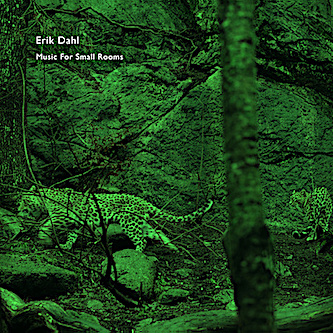 In 2020, Swedish composer and keyboardist Erik Dahl released Gethenian Suite, a gothic laden neoclassical album spotlighting the Erik Dahl Ensemble. In early 2022 Erik Dahl is back with a solo album called Music For Small Rooms. Also featuring members of the Erik Dahl Ensemble, the 10-track Music For Small Rooms is similar to Gethenian Suite, yet in some ways it is somewhat sparser, though it’s equally effective. If anything, Music For Small Rooms is more driven by a modern day instrumental prog-rock ethos, although the music is far away from rock and is more rock in opposition, borrowing from the traditional 1970s and early ‘80s era Swedish progressive music sound pioneered by keyboardist-composers like Stefan Nilsson, the late Björn J:son Lindh and Lars Hollmer.
In 2020, Swedish composer and keyboardist Erik Dahl released Gethenian Suite, a gothic laden neoclassical album spotlighting the Erik Dahl Ensemble. In early 2022 Erik Dahl is back with a solo album called Music For Small Rooms. Also featuring members of the Erik Dahl Ensemble, the 10-track Music For Small Rooms is similar to Gethenian Suite, yet in some ways it is somewhat sparser, though it’s equally effective. If anything, Music For Small Rooms is more driven by a modern day instrumental prog-rock ethos, although the music is far away from rock and is more rock in opposition, borrowing from the traditional 1970s and early ‘80s era Swedish progressive music sound pioneered by keyboardist-composers like Stefan Nilsson, the late Björn J:son Lindh and Lars Hollmer. 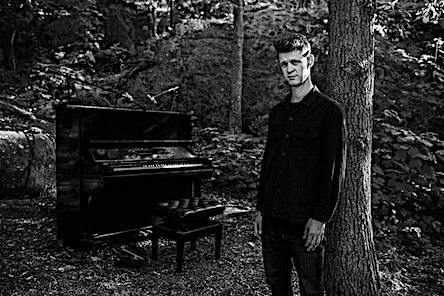 mwe3: How have things been in Sweden this past year or so? Even after the pandemic, I guess the war in Ukraine has created quite a stir. Are things getting back to normal after the pandemic and now this war. Seems like there’s been a lot of upheaval in the air in recent times. Is that the context within which you created Music For Small Rooms? Is your new album proof that great art come out of turmoil?
mwe3: How have things been in Sweden this past year or so? Even after the pandemic, I guess the war in Ukraine has created quite a stir. Are things getting back to normal after the pandemic and now this war. Seems like there’s been a lot of upheaval in the air in recent times. Is that the context within which you created Music For Small Rooms? Is your new album proof that great art come out of turmoil? 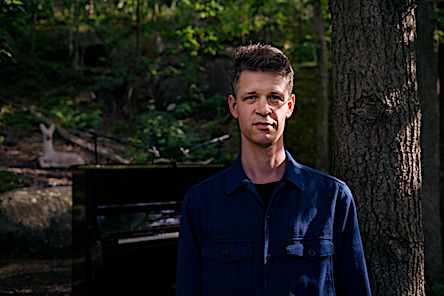 Erik Dahl: Gethenian Suite was actually recorded in 2019. And Music For Small Rooms was mostly recorded in three days in May 2020, plus some extra material at the end of 2020. I had begun four of the songs earlier but wrote most of the material from March until May 2020. I was also writing for Erik Dahl Ensemble during this time.
Erik Dahl: Gethenian Suite was actually recorded in 2019. And Music For Small Rooms was mostly recorded in three days in May 2020, plus some extra material at the end of 2020. I had begun four of the songs earlier but wrote most of the material from March until May 2020. I was also writing for Erik Dahl Ensemble during this time. 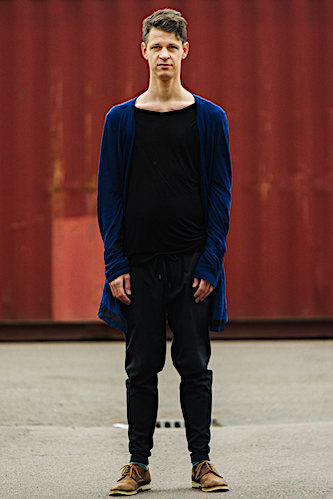 Erik Dahl: Yes, “Natural Home” was written and recorded later, in November 2020, because I felt the album lacked something energetic. First it was using a programmed beat, but that didn’t work, it was too mechanical. William intuitively knew how to play it!
Erik Dahl: Yes, “Natural Home” was written and recorded later, in November 2020, because I felt the album lacked something energetic. First it was using a programmed beat, but that didn’t work, it was too mechanical. William intuitively knew how to play it! 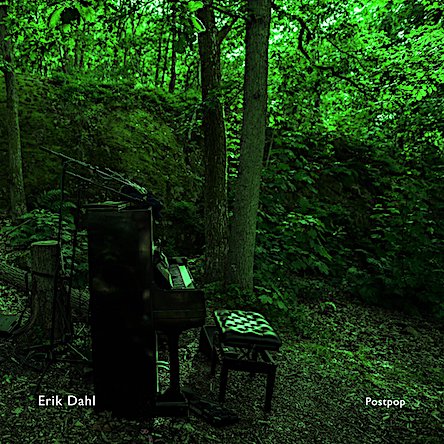
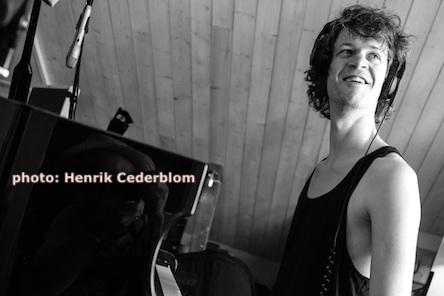 Erik Dahl: When I started writing this song I sent an early sketch to a friend who is an artist. She sent me back a video where she combined the music with a video in slow motion of a man doing soccer ball tricks. It brought out emotional qualities in the music I didn’t realize was there. So from then on I called it “The Man With The Ball”.
Erik Dahl: When I started writing this song I sent an early sketch to a friend who is an artist. She sent me back a video where she combined the music with a video in slow motion of a man doing soccer ball tricks. It brought out emotional qualities in the music I didn’t realize was there. So from then on I called it “The Man With The Ball”. 